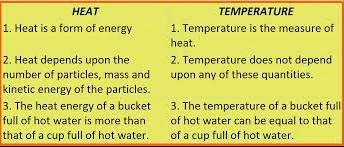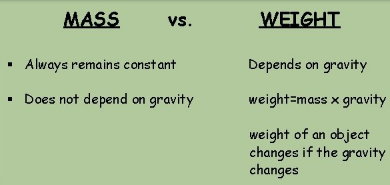Difference Between Heat And Temperature

There are many differences between these two terms. While The basic and key difference between heat and temperature is that heat is defined as the movement or exchange of energy between bodies, while the temperature is the measure of the agitation of the molecules of a body.
The relationship between heat and temperature is that for the temperature of a body to change there must be a transfer of heat. Do you want to know the difference between heat and temperature? If so, then this article will give you a lot of benefits. It includes:
- Heat vs Temperature
- Comparison Chart
- Frequently Asked Questions
- A lot more.
Heat vs Temperature
- Heat is the thermal energy that is transferred between two or more bodies, while Temperature is a thermodynamic property that measures the thermal state of a body.
- Heat is measured in Joules (J) or Calories (cal), while the temperature is measured in Kelvin, Celsius, or Fahrenheit.
- The calorimeter is the device that measures the energy in transfer, that is, the heat, while the temperature is measured with a temperature sensor or a thermometer.
- The effect of heat depends on the amount of matter there is, the temperature does not.
- In fact, heat is a form of energy, while the temperature is the property that measures the amount of heat in a body or substance.
Difference B/w Heat And Temperature In Tabular Form
|
Heat |
Temperature |
|
| What is it? | Transfer of energy from one body to another. | A measure of the kinetic energy of the molecules of a material. |
| Units |
|
|
| Measuring instrument | Calorimeter | Thermometer |
| Examples | A hot spoon transfers heat to cold water in a cup. |
|
What is the Heat?
Heat in physics is “The transfer of thermal energy that flows from a body with a higher temperature to another with a lower temperature”. Thermal equilibrium is reached when the temperature between both bodies is the same. In physics, there is no such concept as “the amount of heat of a body”.
Heat transmission can occur in three ways:
Thermal conduction
Heat transfer is given by the agitation of molecules that causes the rise in temperatures, the expansion of bodies, the melting of solids, and the evaporation of liquids.
Examples of thermal conduction:
- Spoon gets hot when in contact with the hot vessel
- Ironing clothes
Also, Look At this Suggested Article:
Thermal Convection
Heat transfer occurs between liquids and gases. For example: when boiling water.
Examples of thermal convection:
- Ice melting
- Air conditioning
- Car radiators
- Convection Ovens
Thermal Radiation
Heat is spread by electromagnetic waves without the need for both bodies to have contact. Examples of Thermal Radiation are:
- Earth getting heated by Sun.
- Heat being emitted by a radiator.
Unit of heat:
In SI Units, heat is measured in energy units joules (J). It can also be measured in calories, where 1 calorie = 4.186 joules. Calorimetry is the part of physics that studies heat, that is, the transfer of energy from one body to another.
What is temperature?
It is the physical quantity that measures the kinetic energy of molecules and the thermal state of a body. That is, the hotter the body is, the greater its molecular agitation, on the contrary, the colder the body, the less its molecular agitation.
The thermometer is the device used to measure temperature, whose value can be presented on thermometric scales :
- Celsius (°C),
- Kelvin (°K),
- Fahrenheit (°F).
On the Kelvin scale, the melting point of water is 273 K (0 °C), and the boiling point is 373 K (100 °C). On the Fahrenheit scale, the melting point of water is 32°F (0°C) and the boiling point is 212°F (100°C).
Frequently Asked Questions
What is the relationship between heat and temperature?
The First Law of thermodynamics says that if two bodies at different temperatures are in contact, there is an exchange of energy in the form of heat. Under normal conditions, if you supply heat, the temperature rises. On the contrary, if you remove heat from a body then the temperature drops.
What is the SI unit of heat?
The SI unit of heat is Joule.
What is the SI unit of temperature?
The SI unit of temperature is Kelvin.

